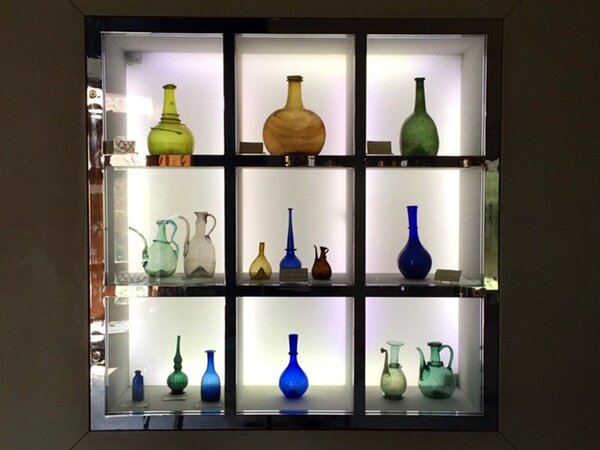Traditional glasswork studied in Abgineh Museum

TEHRAN – A number of Iranian scholars and researchers have recently studied ten pieces of ancient glassware in Tehran’s Glass and Ceramic Museum, ILNA reported on Saturday.
Studying the raw materials used in the manufacture of historical glasses was the purpose of this project, said Narges Sani, who presided over the project.
With the help of library studies, the theoretical part of the project discusses the history of glass and glassmaking in Iran and neighboring regions, as well as the raw materials used for making historical glass in various places, she added.
In the practical part, a number of historical glass samples were studied, and their chemical compositions were compared with glass groups from different areas to determine their chemical composition, she explained.
The used pieces of glassware in the project date from the Parthian era to the (early) Islamic era, she noted.
They were not retrieved from scientific excavations, and the place of discovery is unknown. Therefore, they can only be dated based on their general shape, she mentioned.
Glass blowing is a glass-forming technique that humans have used to shape glass since the 1st century BC. The technique consists of inflating molten glass with a blowpipe to form a sort of glass bubble that can be molded into glassware for practical or artistic purposes.
Also known as Abgineh Museum, the Glass and Ceramic Museum offers visitors a wide range of glasswork, brickwork, plasterwork, mirror work as well as inlaid artworks that date from the 2nd millennium BC to the present day, all housed within an elegant Qajar-era (1789 to 1925) edifice.
The two-story octagonal structure itself retains a lot of charm as seamlessly blends genuine Iranian architecture with 19th-century European motifs.
It was originally constructed upon the orders of the 20th-century politician Ahmad Qavam, better known as Qavam-ol-Saltaneh for his personal lodging. It is situated a short walk northward of the National Museum of Iran on Si-e Tir St.
ABU/AM
